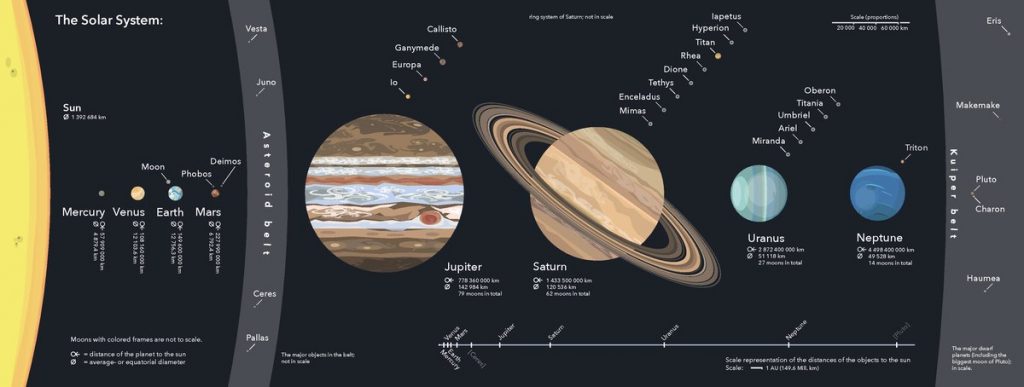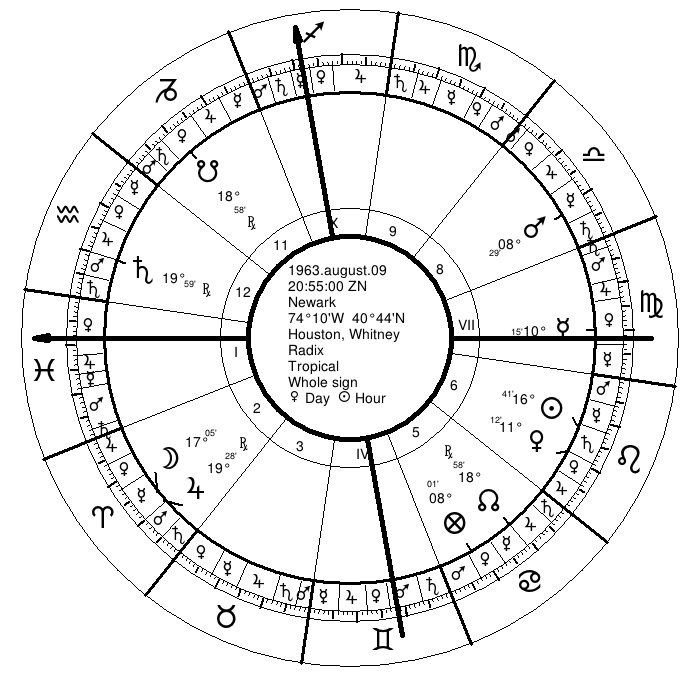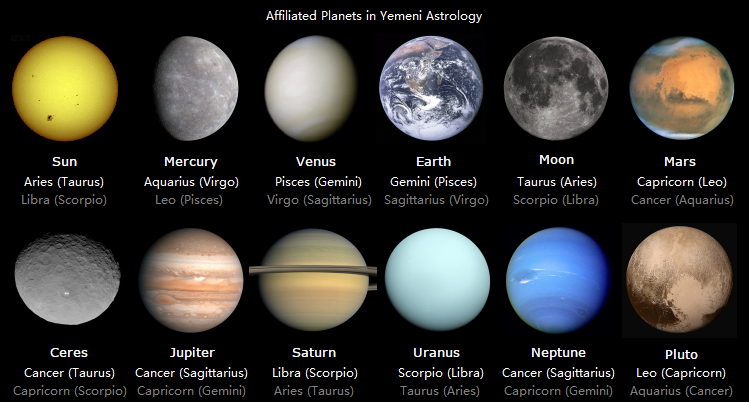In Vedic Astrology, a scientific study of celestial bodies and their positions help develop a horoscope or birth chart giving a comprehensive forecast of a person’s life. It’s also a proven way to study his/her future, representing their characteristics and circumstances at any given point in life. One can arrive at this information by taking the native’s time and place of birth. However, something very important, often overlooked in the procedure, is the strength of planets, including that of houses.
Strength of Planets in Astrology – A Study
All the planets are in constant motion, occupying a specific place in the universe. In other words, every planet occupies a particular sign in the cosmos and a particular house while forming defined angles with other planets. All three aspects of every planet give a specific degree and a type of strength and weakness.
Shadbala
The degree of strength and also the weakness of planets is arrived at by Shadbala. Decoding the term, Shadbala comprises of ‘Shad’ meaning six and ‘Bala’ means strength. Hence, the term means six-fold strength and planets can have six different types of strength. These categories of different strengths are:
- Sthana Bala or Positional strength
- Dig Bala or Directional strength
- Kaala Bala or Temporal strength
- Cheshta Bala or Motional strength
- Naisargik Bala or Natural strength
- Drik Bala or Aspectual strength
Why Is Shadbala Important?
To accurately assess the Strength of Planets in Indian Vedic Astrology, Shadbala is very important. It’s the most precise way to discover your favourable planets and their strengths. The compilation of all the six sources of planetary strengths also indicates a planet’s strength in a given horoscope and its capacity to perform its role. When a planet is strong in Shadbala, it has a tendency to give good or bad results depending on its nature and characteristics.

Shadbala of Shadow Planets
Rahu and Ketu are two shadow planets that involve different calculation methods to assess their strength. Rahu’s strength is identical to Saturn and Ketu’s strength is the same as of Mars. They also represent the strength of the
A Study of Planets Strength by Degree
In Vedic Astrology, the degree wise strength of planets shows the influence of a particular planet over others. It also signifies which planet the native has to endure the most in his/her life. While talking of degree of planets in Vedic Astrology, the Avasthas of planets become the deciding factors. In layman’s terms, avastha means the condition or the state of a planet depending on the degree it occupies as it transits over the constellations. The movement over different points in the Zodiac influences the mood of each planet. The Avasthas of planets are further divided into five categories. However, here we’ll concentrate only on Baladi Avasthas that are purely based on the position of planets in terms of a specific degree out of 30 degrees in a given sign.
All planets and also the ascendent position themselves at specific degrees, creating a certain state or Avastha. The degrees in Baladi Avasthas provide the basis for judging the Strength of Planets that also include five states of six degrees each. The Avasthas represent human progression from birth to death. These are:
For odd signs…
Bal Avastha or Infant State at 0 – 6 degrees
Kumara Avastha or Youthful State at 6 – 12 degrees
Yuva Avastha or Adolescent State at 12 – 18 degrees
Vriddha Avastha or Mature State at 18 – 24 degrees
Mrit Avastha or Old/Dead State at 24 – 30 degrees
The order of Avasthas or state of planets is reversed in case of even signs.

The Significance of Avasthas in Vedic Astrology
Taking Avasthas of planets into account, the yuva or the adolescent state is always the strongest followed by kumara avastha or youthful state. The pattern follows by the bal avastha, vriddha avastha and finally mrit avastha which happens to be the weakest state. Hence, the planets state determine the rate at which they can influence the signs. In simple terms, malefic effects of certain planets in old state cannot do much harm. It is the planets in adult state that have the power to influence and give results based on the planet’s features. Hence, whatever results the planets have in store during the adult state, the native should face them. It can be benefic or malefic and will also consider other factors of Astrology.
Strength of Planets in Horoscope
We already know the six-fold strengths of planets in Vedic Astrology. Let’s have a brief look at each of them.
Sthana Bala or Positional strength
Here, a planet derives its strength from the position it occupies in a specific sign in the horoscope. The planet can either be exalted or debilitated in that sign or can be in the quadrant, succedent or the descending house. Sthana Bala includes five sub-divisions, namely:
- Uchcha Bala
- Sapta vargiya bala
- Ojayugma bala
- Kendra bala
- Drekkana bala
Dig Bala or Directional strength
Directional Strength of Planets is determined by the houses they occupy that represent different directions. The ascendant always takes the East direction with the 4th house aiming towards the North, the 7th house towards the West and the 10th house going South. Hence, every planet, with its unique characteristics, gets a particular amount of strength in a specific direction.
Considering these facts, planets achieve complete dig bala while occupying a particular house. This also means planets in specific houses will achieve no dig bala. Usually, a planet that will be very strong in a particular direction will become weak when it occupies the opposite direction.

Kaala Bala or Temporal strength
As the name suggests, a planet derives its strength depending on the time of birth. It is actually the temporal strengths of planets. The strength of time following the mathematical astrology features 6 divisions, namely:
- Nataunnata Bala
- Paksha Bala
- Tribhaga Bala
- Varsh-maas-din-hora bala
- Aayan Bala
- Yudha Bala
Cheshta Bala or Motional strength
Signifying retrogression, slow-moving planets including the retrograde ones. They often focus their energy more and encounter this situation due to their presence in one place for a considerable amount of time. Results are determined by taking the corresponding speed of a planet; i.e. relative to its average speed. Depending on the longitudinal distance of a planet from the Sun beyond a specific limit, the planet appears to be in retrograde motion. However, the luminary bodies and Rahu & Ketu are not considered here since they always move in the reverse direction.
Naisargik Bala or Natural strength
Every planet gets a certain amount of Shastiamsa depending on its luminosity. The brightest planet, the Sun, gets the maximum Shastiamsa and Saturn gets the least. Hence, the amount of Shastiamsa a planet receives at any given time in any horoscope is the same.
Drik Bala or Aspectual strength
Another significant aspect regarding the Strength of Planets is its aspectual strength. Drik Bala means the

How to Know Strength of Planets?
These are the basic factors that play an important role in determining the strength of planets in a birth chart:
- Ascendant Lord
- The specific placement of planets in signs or rashis
- Planets occupying specific Nakshatras
- Placement of planets in different houses
- Planets occupying different positions in Navamsha
- Malefic and benefic effects in aspects or conjunctions
- Planets’ positions in divisional charts
- Planets occupying 10 to 20 degrees
- Planet occupying positions in kendra and trikona
- Planets in upachaya houses
Shadbala Pinda
Shadbala Pinda commemorates the collective strength of each planet. It is available by adding Sthana Bala, Dig Bala, Kaala Bala, Cheshta Bala, Naisargik Bala and Drik Bala. From the available result, Driga Bala is also added or subtracted depending on the positive or negative figure. The final result then gives the net strength in Shastiamsa. Additionally, every planet should have a certain amount of strength to provide the results.
Vimshopaka Bala
This is yet another aspect of the strength of planets that is obtained by placement in various Vargas. It’s a critical part of Vedic Astrology and consists of Shad Varga, Sapta Varga, Dasha Varga and Shodas V
The Final Word
Vedic Astrology is vastly involved in arriving at definite conclusions through a thorough study of the birth chart. Hence, several factors and calculations of multiple entities of heavenly bodies come together to reveal the truth about an individual’s life. Strength of Planets itself has diverse angles to take into consideration while developing the birth chart. It’s one of the principal foundations of Vedic Astrology aiming at and almost always achieving accurate results.














